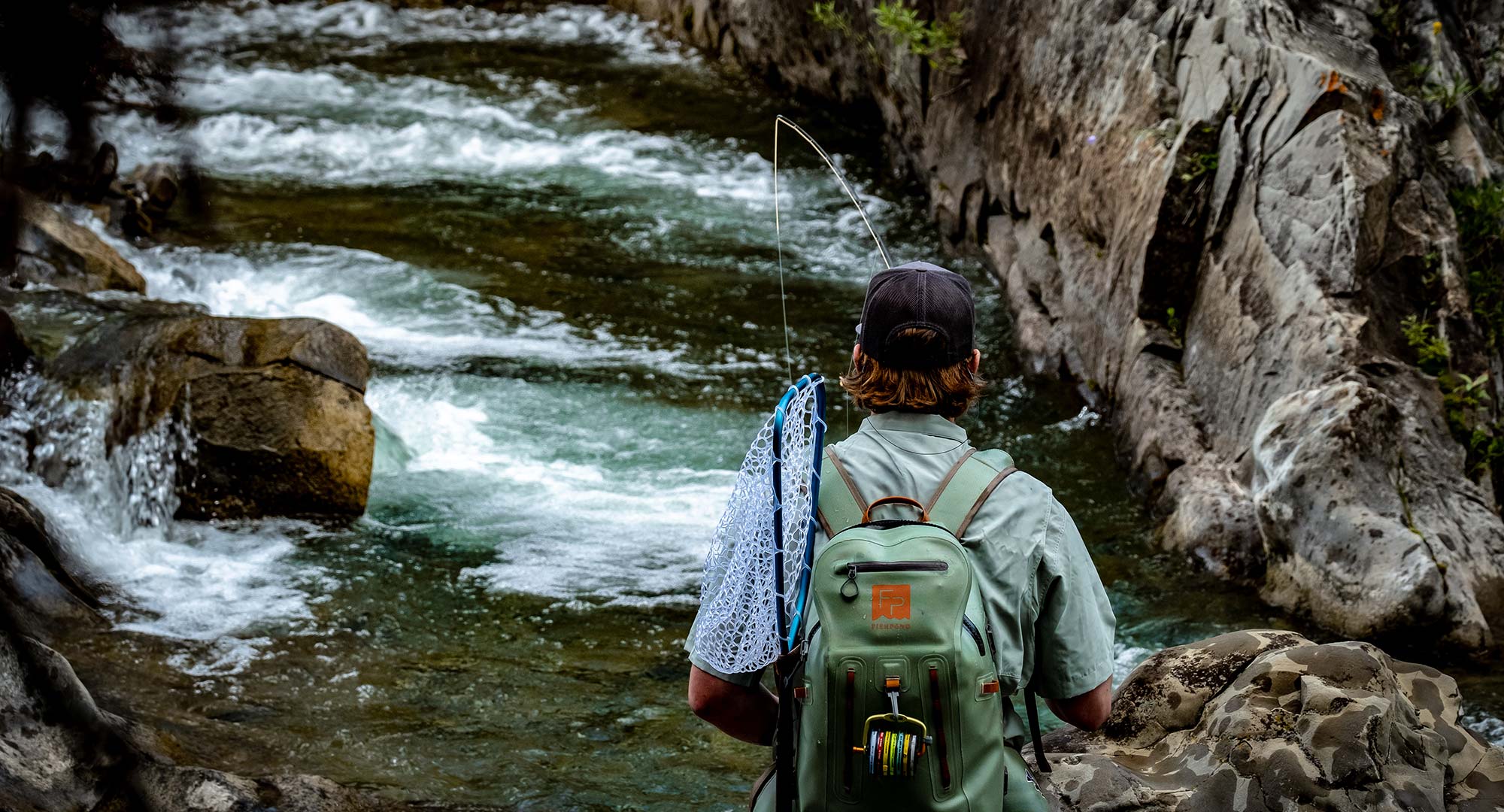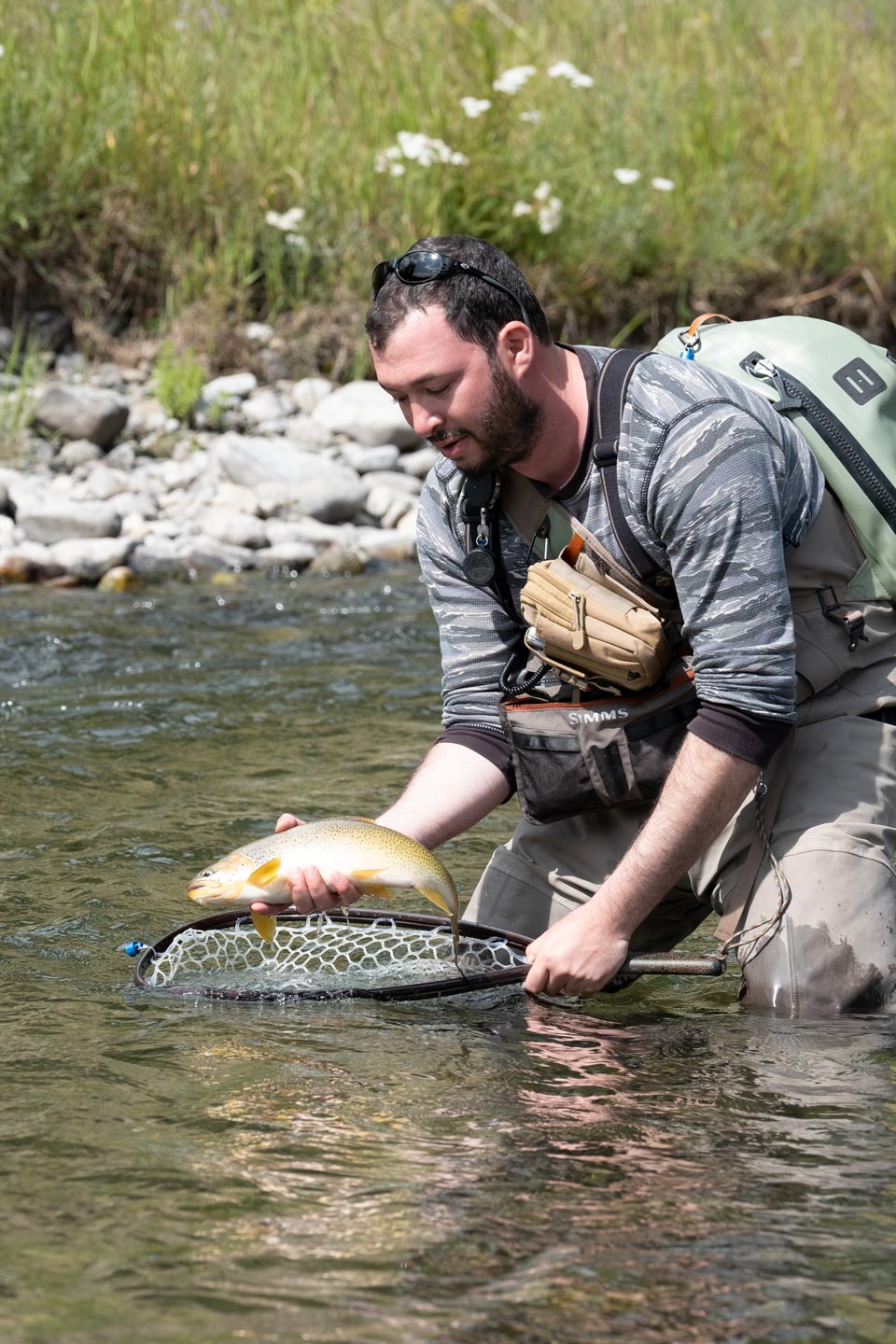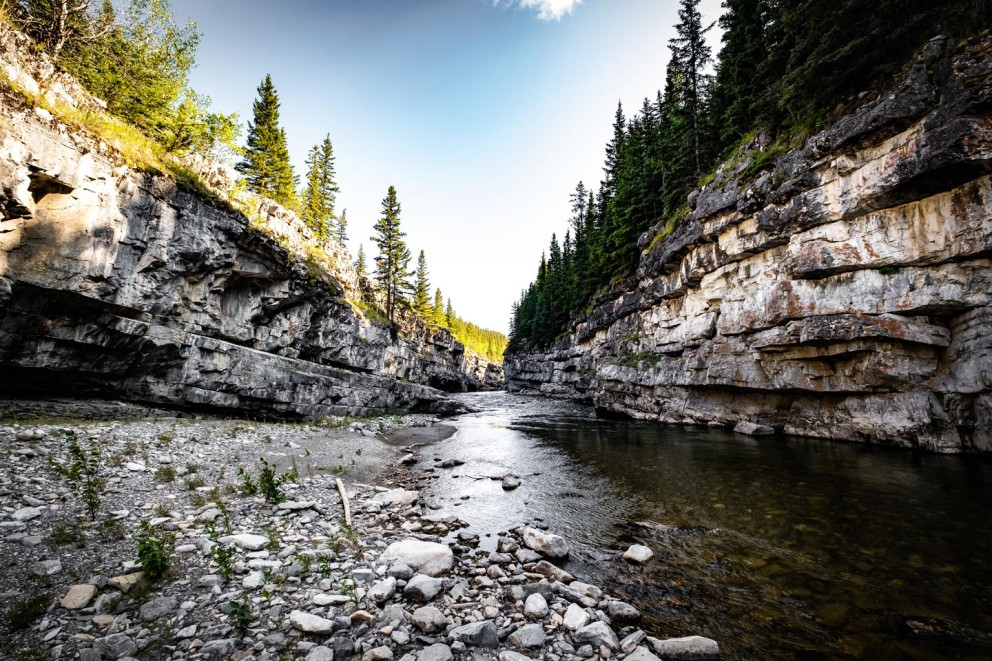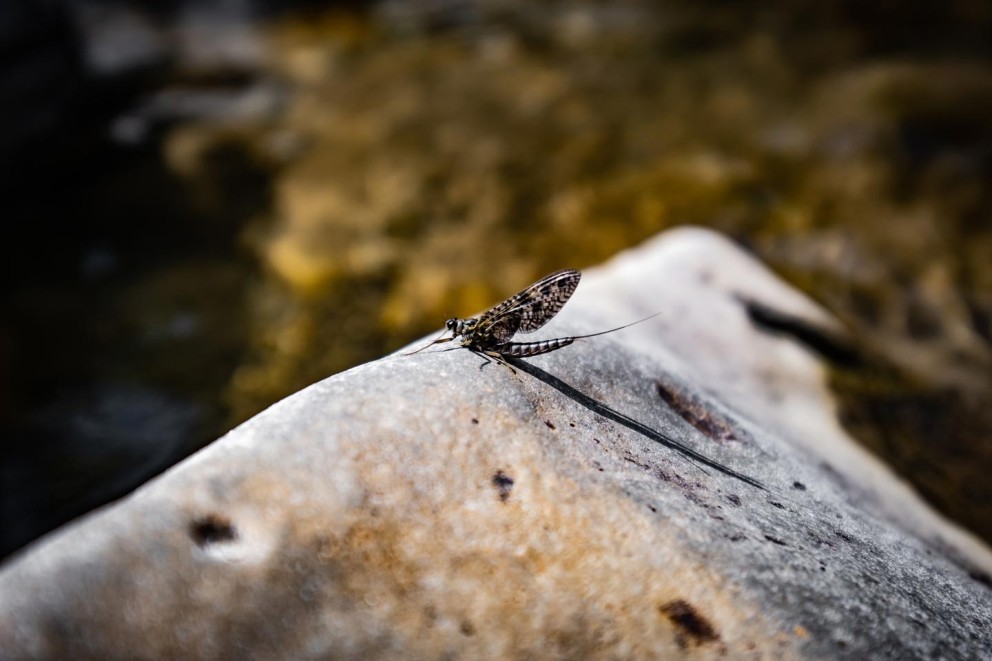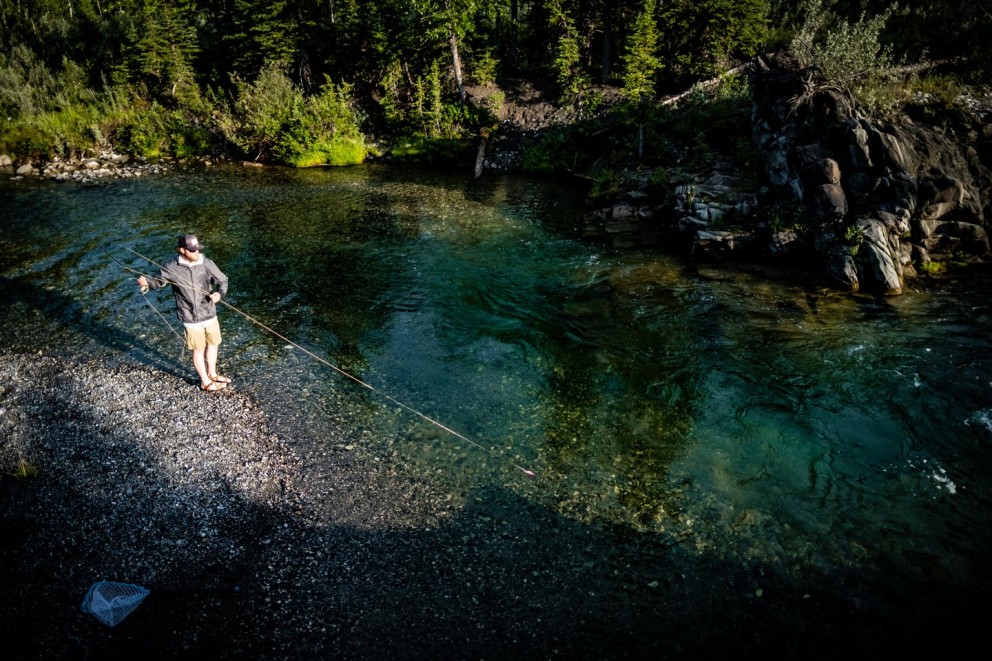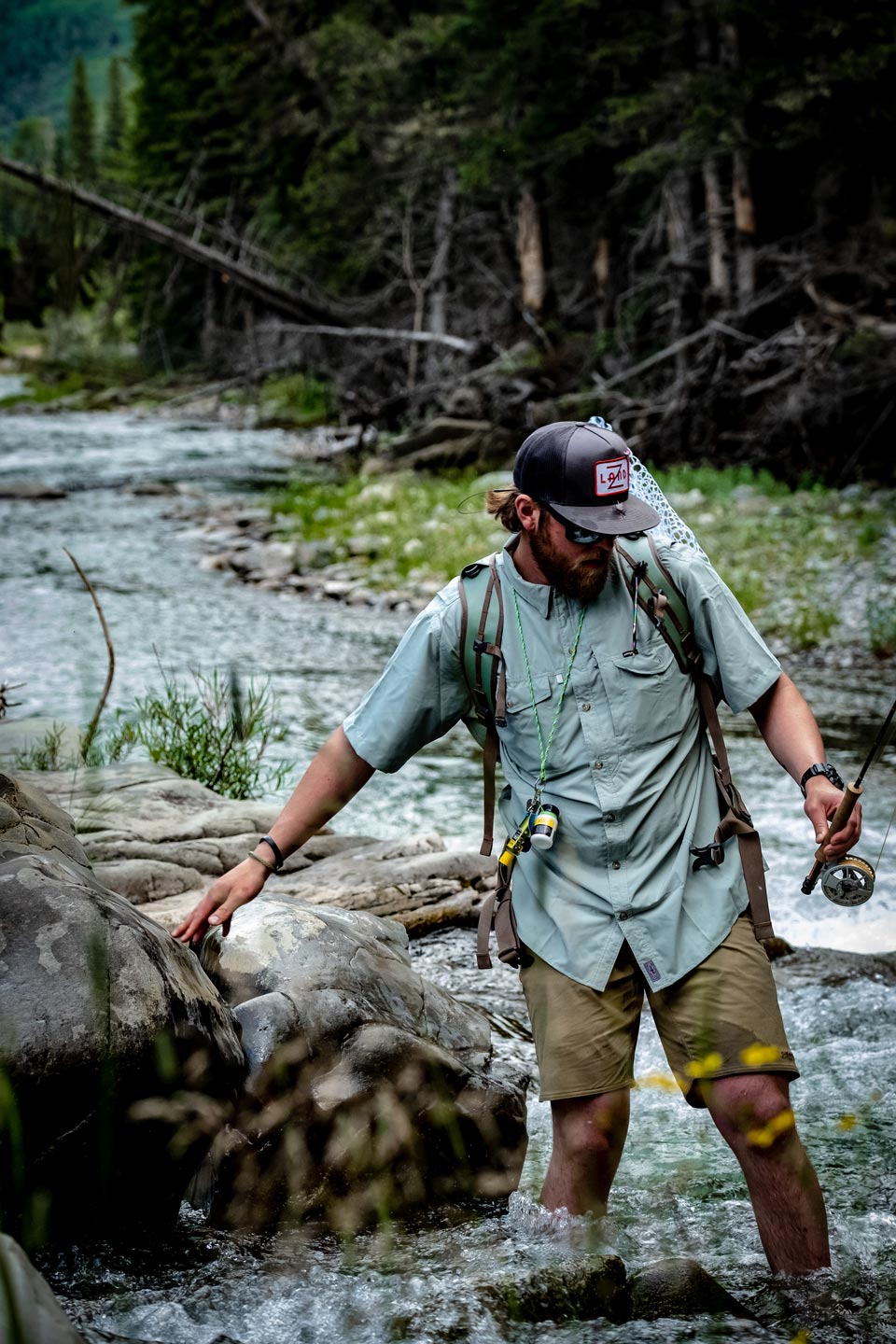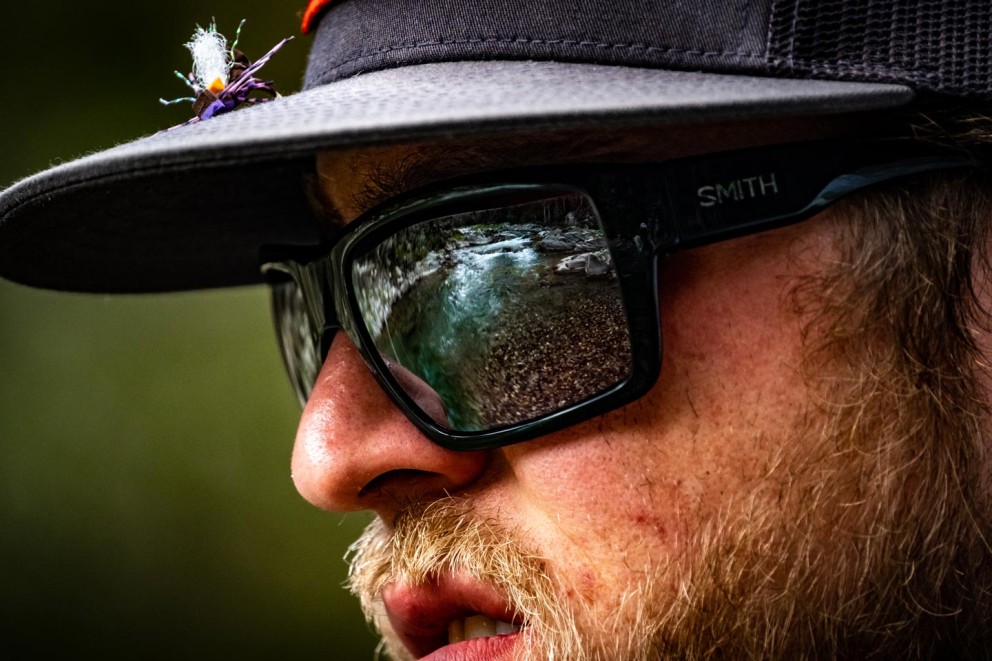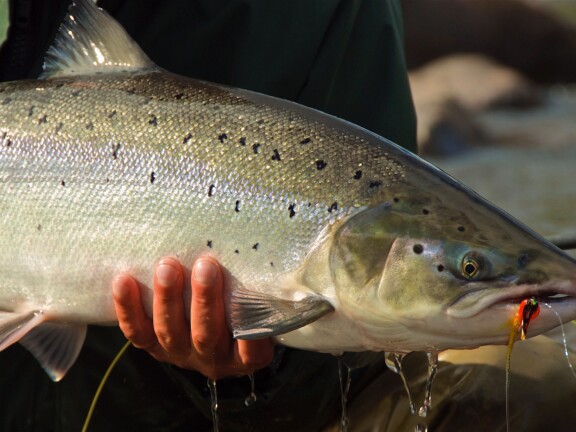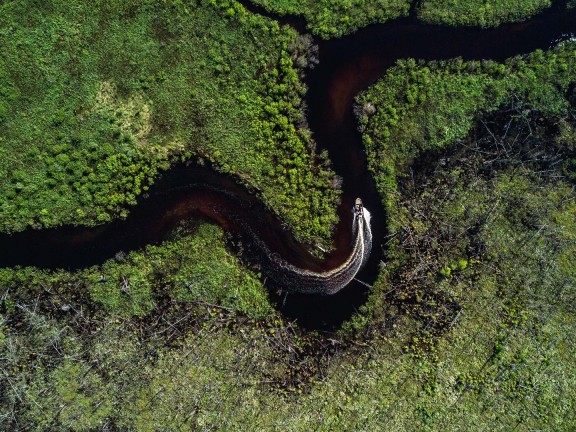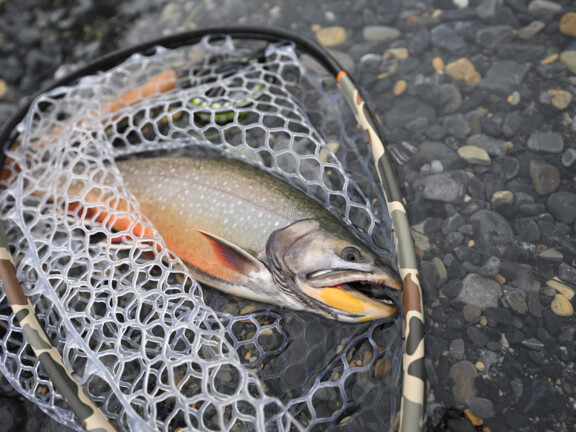This is river fishing for native westslope cutthroat and bull trout at its finest. Guests choose from five incredible area waters, including the Elk, Wigwam, Bull, and Flathead rivers, as well as Michel Creek.
The fishing season begins on June 15 as spring runoff diminishes and the rivers drop into shape. The cutthroats must feed heavily and put on weight during their short four-month long growing season. For that reason, they don’t have time to be picky—they rise for dry flies every day of the season, especially to big, foam-body attractor patterns. Hatches start with golden stoneflies in June and July, along with green drakes. Terrestrials, including spruce moths and winged ants, round out the summer and early fall menu, followed by predictable fall blue-winged olive hatches on a daily basis.
In short, this is world-class dry fly fishing for aggressive trout in fantastic surroundings. Each of these rivers offer unique opportunities. Here’s a sample of what you’ll find:
Elk River
This is FWA’s showcase stream and a must-hit for every visiting angler. The Elk is glacier fed, 140-miles long, and offers incredible numbers of aggressive native westslope cutthroat trout. The river flows through some of British Columbia’s most stunning scenery and is the perfect size to float, meaning anglers can sit or stand comfortably in a raft and cast those bushy dries to the banks. The average cutthroat ranges between 14 and 17 inches and big bull trout are an added bonus. Strong golden stonefly hatches come off when the river opens in June, followed by green drake emergences, which guide Curtis Hall calls “The Elk’s bread-and-butter hatch.” Hall also describes the Elk as “beginner-friendly.”
“The Elk is not as technical as some streams in Montana,” Hall said. “And because the fish are so aggressive we can fish short, stout leaders and big foam flies. The fish just crush them.”
Michel Creek
Lodge owner Kim Sedrovic calls the Michel the best cutthroat trout fishery in North America. And there’s good reason for that accolade—the creek offers great access, easy wading, native cutthroats that average 16 inches long and sometimes climb into the 18- to 20-inch range, and plenty of good hatches to match.
During summer, the Michel offers a predictable green drake hatch that comes off each morning. When it’s on, anglers easily cover this “smallish” creek and raise those big cutthroats to easily-visible dry flies. It’s endlessly fun fly fishing with abundant road access.
Wigwam River
The Wigwam pushes through a narrow,f steep canyon before dumping into the Elk River south of Fernie. Fishing this stream offers a wilderness experience replete with large cutthroats and bull trout. During a good year, some 4,000 to 7,000 bulls ranging between 3 and 15 pounds push into the system. Anglers catch these fish on streamers that imitate cutthroat trout and whitefish. Because the Wigwam often flows gin clear, anglers can spot dozens of bulls laid up in the deeper holes, waiting to ambush their unsuspecting prey.
Bull River
The Bull River is split between two sections—the upper and the lower—and each offers strong attributes. The Upper Bull is a high mountain freestone stream offering lots of cutthroat trout that range between 10 and 14 inches. Because the upper river doesn’t produce a lot of bug life these fish feed voraciously, attacking dry flies without hesitation. Most notably, these trout are genetically isolated and have not changed one bit in thousands of years. If you are a connoisseur of pure-strain fish perfectly suited to their environment, this is a must-do day trip.
The Lower Bull is all about bull trout and some large cutthroats. The bulls are available in July and August as they follow kokanee salmon out of Lake Koocanusa into the river. While some bull trout on their spawning runs elsewhere can get tight-lipped during summer, these fish behave differently—they are bright, super aggressive, and simply interested in eating as many kokanee as they can. These fish hammer streamers that mimic those salmon and they range to 10 pounds or more.
Flathead River
The Flathead flows through one of the greatest wilderness corridors in North American, and fishing this broad river is an experience you’ll remember. While casting streamers on the Flathead, anglers should keep an eye out for Rocky Mountain elk, mule deer, bighorn sheep, and, yes, grizzly bears. Bear sightings are relatively common, as are hookups with bull trout that measure more than 30 inches long. Cutthroats are available and, as elsewhere, they smack high-riding dry flies.
Boats and Equipment
Whether floating the Bull, Flathead, or Elk rivers, anglers cast from McKenzie-style driftboats or fully outfitted rafts. Anglers should arrive with multiple fly rods in hand, including a 9-foot 5-weight or 6-weight for dry flies and cutthroats, and a 7- or 8-weight streamer rod for bull trout. Loaner equipment is available.
